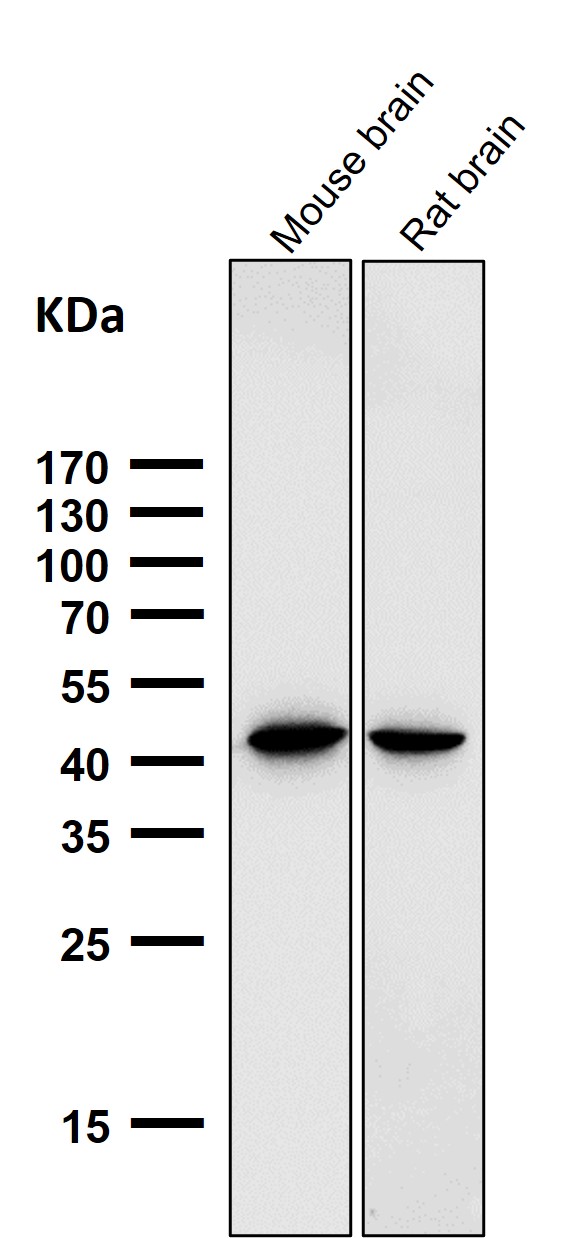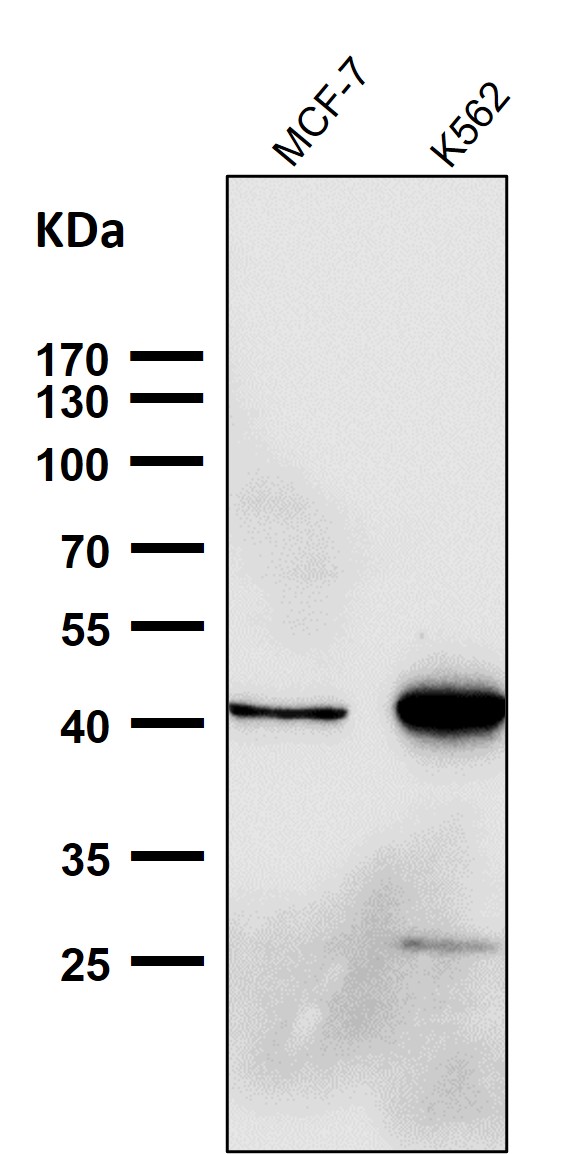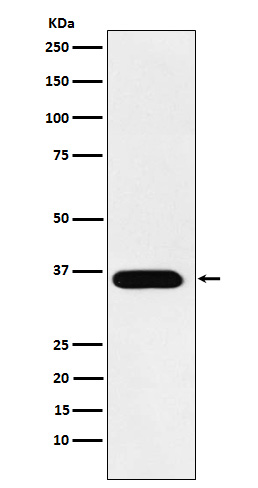


| WB | 咨询技术 | Human,Mouse,Rat |
| IF | 1/20-1/50 | Human,Mouse,Rat |
| IHC | IHC:1/100-1/200;IHF:1/50-1/200 | Human,Mouse,Rat |
| ICC | 1/50-1/200 | Human,Mouse,Rat |
| FCM | 咨询技术 | Human,Mouse,Rat |
| Elisa | 咨询技术 | Human,Mouse,Rat |
| Aliases | TRAP; SPENCDI; TrATPase;;TRAP |
| WB Predicted band size | Calculated MW: 37 kDa ; Observed MW: 35,42 kDa |
| Host/Isotype | Rabbit IgG |
| Antibody Type | Primary antibody |
| Storage | Store at 4°C short term. Aliquot and store at -20°C long term. Avoid freeze/thaw cycles. |
| Species Reactivity | Human,Mouse,Rat |
| Immunogen | A synthesized peptide derived from human TRAP |
| Formulation | Purified antibody in PBS with 0.05% sodium azide,0.05% BSA and 50% glycerol. |
+ +
以下是关于TRAP抗体的3篇参考文献(注:文献内容基于领域内常见研究方向,部分作者和标题为示例性简化):
---
1. **文献名称**: *"Thrombospondin-Related Anonymous Protein (TRAP) as a Malaria Vaccine Target: Antibody-Mediated Inhibition of Sporozoite Motility"*
**作者**: Sinnis, P., et al.
**摘要**: 研究聚焦于疟原虫TRAP蛋白在子孢子入侵肝细胞中的关键作用,通过动物模型证明TRAP特异性抗体可显著抑制子孢子的滑移运动,降低感染率,为基于TRAP的疟疾疫苗开发提供了实验依据。
---
2. **文献名称**: *"Structural Insights into TRAP-Receptor Interactions and Antibody Epitope Mapping"*
**作者**: Müller, K., et al.
**摘要**: 利用冷冻电镜和X射线晶体学解析TRAP蛋白的三维结构,揭示其与宿主细胞受体的结合区域,并通过表位定位筛选出具有中和活性的单克隆抗体,为理性化抗体药物设计奠定结构基础。
---
3. **文献名称**: *"Multivalent TRAP-Based Vaccines Elicit Protective Antibody Responses Against Plasmodium falciparum in Preclinical Models"*
**作者**: Doolan, D.L., et al.
**摘要**: 评估了多价TRAP疫苗(结合其他疟原虫抗原)在灵长类动物中的免疫原性,发现其诱导的抗体可通过调理吞噬和补体激活双重机制清除血液期寄生虫,支持TRAP作为组合疫苗的潜力。
---
*注:以上文献为示例性内容,实际研究中请通过学术数据库检索并引用具体文献。若需特定领域(如非疟疾相关TRAP抗体)的文献,请补充说明。*
TRAP (Tartrate-Resistant Acid Phosphatase) antibodies are immunological tools used to detect the TRAP enzyme, a metalloproteinase highly expressed in osteoclasts and certain immune cells. TRAP, also known as acid phosphatase 5 (ACP5), exists as two isoforms: 5a (secreted) and 5b (osteoclast-specific). It plays critical roles in bone resorption, immune regulation, and iron metabolism. TRAP antibodies are particularly valuable in biomedical research and diagnostics. In bone biology, they help identify osteoclast activity, aiding studies on osteoporosis, bone metastases, and rare skeletal disorders. In hematopathology, TRAP antibodies assist in diagnosing hairy cell leukemia (HCL), where TRAP isoform 5a is overexpressed in malignant B cells.
These antibodies are commonly utilized in techniques like immunohistochemistry (IHC), western blotting, and flow cytometry. Monoclonal TRAP antibodies offer high specificity, distinguishing TRAP from other acid phosphatases due to its unique resistance to tartrate inhibition. Recent studies also explore TRAP's involvement in macrophage polarization and fibrosis, expanding its diagnostic relevance. Clinically, serum TRAP 5b levels serve as a biomarker for bone turnover rates, while TRAP 5a correlates with HCL progression.
Despite their utility, TRAP antibody applications require careful validation, as enzyme activity and epitope accessibility can vary across sample types. Ongoing research aims to refine TRAP-targeted therapies and improve assay standardization.
×